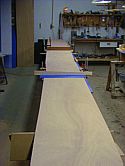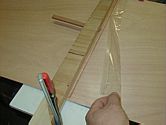
| << back | INDEX | next >> |
 |
|
 |
Speaking of pressure, it should be distributed evenly along the joint. |
 |
Whole 24 feet. The
Cirrus hull plates were made using only these three 2' x 8' sheets. This
is also true of the deck if you are going to make it only from one type
of plywood. |
 |
Peel and admire your accomplishment. Zero cleaning! Sand or scrape lightly. |
| << back | INDEX | next >> |
| 1 2 3 3a 3b 4 5 6 7 8 9 10 11 12 13 14 |
| Home | Kayak Designs | Kayak Shop | Materials | Kayak Gallery | About us |
| Building Manual | Plans | Sandwich Core | Wood Kayak | Order | |
| Epoxy Test | Abrasion Cloth | Rudder | Resources | Choosing Kayak | Guestbook |
If you notice any problems with the site (i.e. error links, missing images) please, let me know. Thanks
Mail:
Vaclav Stejskal
10 Colonial Court apt. 73
Stoneham, MA. 02180
USA
Tel: 781-481-9261
© 1999
- 2020 Copyright Vaclav Stejskal
All rights reserved
Last page update:
11 January 2020